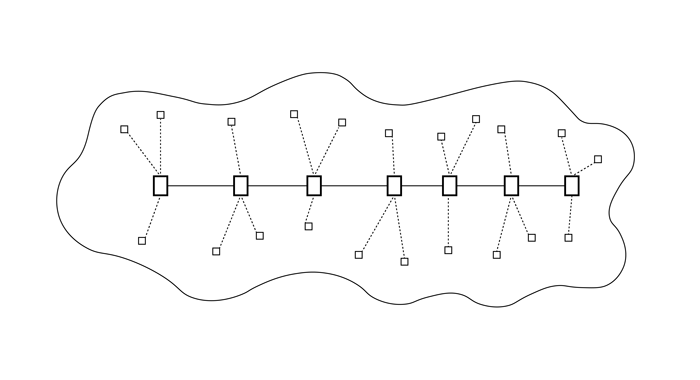THE ENVIRONMENT
Selected Projects
If we imagine a cumulonimbus cloud as a micro-lifeform, we can observe how it goes through the transient life cycle of birth, growth, and death within the span of ten minutes. Fleeting and ever-changing, clouds have been presenting infinite variations in shape and form above us for over four billion years. The ancients were known to have recorded the constantly shifting state of clouds in pictorial indices (yuntu) both to forecast the weather and perform divination. Drawing on these natural phenomena, Xiaoxiao Zhao has created the installation Cloud Atlas by integrating weather data from the city of Qinhuangdao with seven locations in the surrounding area. The observation and recording of cloud activities is not only inseparable from meteorological science, but also distinctly reflects the ecosystem. Adjacent to the Bohai Sea to the south and to the Yan Mountains to the north, Qinhuangdao has a temperate monsoon climate with four distinctive seasons. It is embedded in a mountainous area, hugged by the curving coastlines of Beidaihe with a view of the sea unique to Northern China. However, as cities proliferate and expand, the issue of air pollution, haze and dust becomes increasingly critical. Cloud Atlas depicts the local weather of Qinhuangdao and reflects on the complex power dynamics between ecology and urban development. Appearing to capture a section of floating cloud from the Aranya Gold Coast, Cloud Atlas allows the viewer a moment of reflection and contemplation as it shifts and drifts. Perhaps we may catch a glimpse of the wispy, ink-like motion of clouds as they are being blown away in Shi Tao’s painting, the incessantly rolling clouds in Shelley’s poems, and the novel Cloud Atlas by David Mitchell that travels across the time. In this semi-translucent artificial cloud, atmospheric phenomenon and artificial intelligence, communication technology and divination, cyborg vocabulary and spiritual meditation are able to overlap and coexist. Team Leader: Xiaoxiaozhao Team: Zilun Nie, Fengqi Li, Yao Meng, Chun Song, Xiaolei Hu, Chiyu Tech. Commissioned and produced by UCCA Center for Contemporary Art and Aranya, specially presented by theTANG.
The project speculates on the environmental perception of diverse radiation waves from cosmic rays and UV radiation, to water vapor signals, and 5G mobile communication networks. A system of cloud-like clusters, proposed as collective sentient apparatuses, flock at certain altitudes of different kinds of radiation to capture specific frequencies of signals. These four types of clusters (each is summarized on the reverse of this sheet) - cosmic cluster, UV cluster, water vapor cluster and 5G cluster, give discrete case studies of the larger projective atmosphere. Each cluster is composed of one type of cell containing technological components, senses, transmits, and interferes with their targeted radiation type. As a result, the clusters formulate a multidimensional communication network transmitting various signals through multi-scale spectacles as unnatural phenomena. They also transform the environment by creating feedback loops to deal with space debris, ease uv radiation, solve spectrum conflicts of 5G and weather broadcast, or forming neutral network in public parks. A zone of influence on the ground expands from Manhattan to the globe as the altitude of distribution rises from city level to the clouds and up to space stations and satellites. Through investigating the expanded territory of architecture into the field of atmosphere and radiation filled with particles, electrons and waves, the thesis creates a new system of interpreting and envisioning the environment.
Living 90% of our lives indoors has proliferated as a modality of living and working in New York City since the early 1980s. With the allusion of comfort, the climatically controlled interior reflects the hubris of late-modern capitalism in the heightened combination of entertainment and ecology within the place of work and the domestic interior. Designing, monitoring and managing indoor climates is not only a key engineering project, but also revives a postwar utopian project, to temper and fabricate the environment as a site of architectural production. The voluntary containment of bodies and psyches inside, exhibits new forms of urbanization and collectives enabled from the economic and societal structures of uninhibited energy expenditure. With MICROCLIMATES we monitor, analyze and speculate on indoor micro-ecologies that reproduce fully controlled sections of the natural world. With our survey we aim to critique as to where we are placed within broader histories of environmentalism, urbanization and politics, as well as how to illustrate how civic agency may enable new forms of economic and political relations. Further, we aim to construct a new map of the city, as a collection of dispersed interiorities and a psychogeography of an emerging order in the age of pandemics, climate change and extinction. (text by Lydia Kallipoliti) Research Credits: Team Leader: Lydia Kallipoliti Research collaborator and animation: Xiaoxiao Zhao Studio Team: Doosung Shin, Qicheng Wu Models: Doosung Shin Consultants: Austin Wade Smith, Pamela Cabrera Supported by The Cooper Union, New York and the IDC Foundation.






